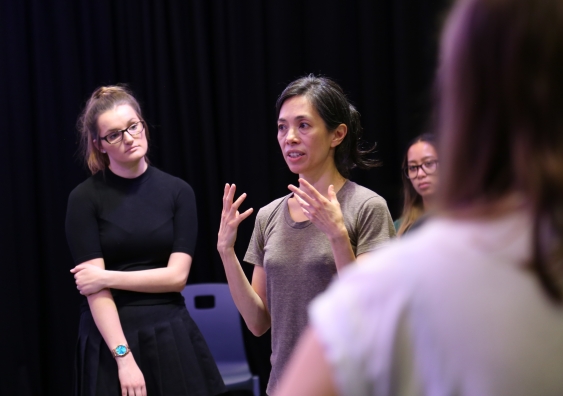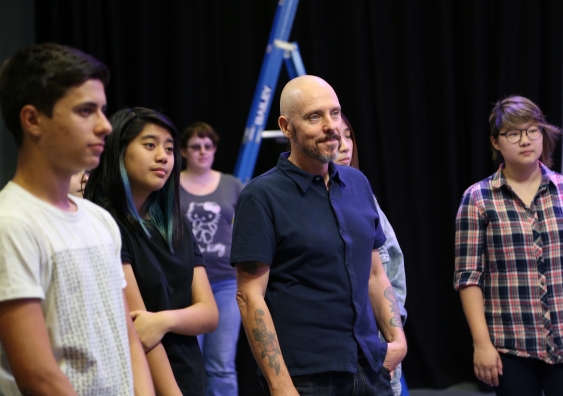Animators connect body and mind
Animation students are getting out from behind their computers to learn body movement techniques designed to bring their characters to life.
Animation students are getting out from behind their computers to learn body movement techniques designed to bring their characters to life.

Fran Strachan
Communications Manager Low Carbon Living CRC
+61 2 9385 5402
fran.strachan@unsw.edu.au
Honours students in the Media Arts program are getting out from behind their computers to learn The Franklin Method, a movement technique incorporating experiential anatomy, education and imagery. The Method also uses practical neuroplasticity exercises to teach students how to use their brain to improve the body’s function.
The Method is taught all over the world, including the universities of Vienna, Cologne, Karlsruhe and the Juilliard School in New York.
Lecturer and animator, Steve Weymouth, said he hopes the Franklin Method will help animation students “fast-track their mind-body connection”.
“A critical part of being an animator is learning how to build a successful, emotional connection between yourself, your characters and the audience,” said Weymouth.
“The idea of this class is get students up from behind their computers, moving around, thinking with their bodies and connecting that with the pose they are trying to animate,” he said.
UNSW Art & Design students are learning body movement techniques to help generate more realistic animated characters. Video: Leilah Schubert
Weymouth invited Sydney-based contemporary dancer and movement educator, Charemaine Seet, to introduce the technique to his students.
“I start the class by encouraging students to focus in on their bodies for one minute – the taste in their mouth, the tension in their muscles and whether they are finding it easy or hard to connect back to themselves,” said Seet.
She said she hopes the students will learn how the human body works and how the mind can effect body movement.
“The Franklin Method is a scientifically designed way of using imagery to understand the internal workings of our bodies. When you understand and visualise your own biomechanics, it can open up an exciting new world for animators.”

Lecturer and animator, Steve Weymouth, observes The Franklin Method class.
Computer science and media arts student, James Ritchie, said his interest in animation started when he discovered Pixar movies as a young kid.
“I’ve wanted to work in the animation industry for a while and this degree suits me because it ties together science and artistic subjects – it caters to both sides of my brain.
“I’ll definitely apply these principles when I’m animating a character – it will be worth doing it for the quality of the final product,” Ritchie said.
Weymouth said the Method seems to ‘click’ with animation students, effectively centralising the body in animation practice.
The lecturer will present a paper, Proprioception and Animation: Somatic Sensation and Animation at the Society for Animation Studies annual conference, in the United Kingdom in July.